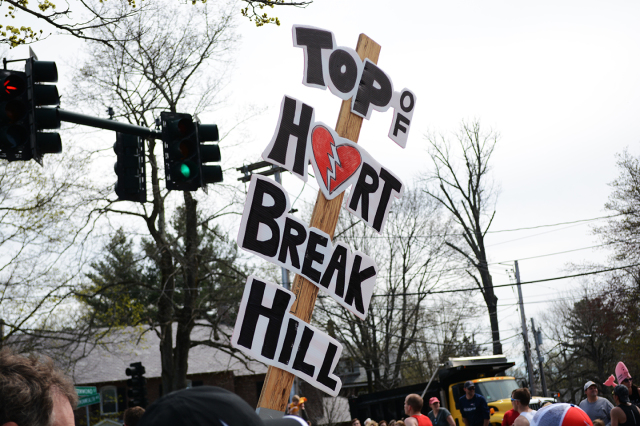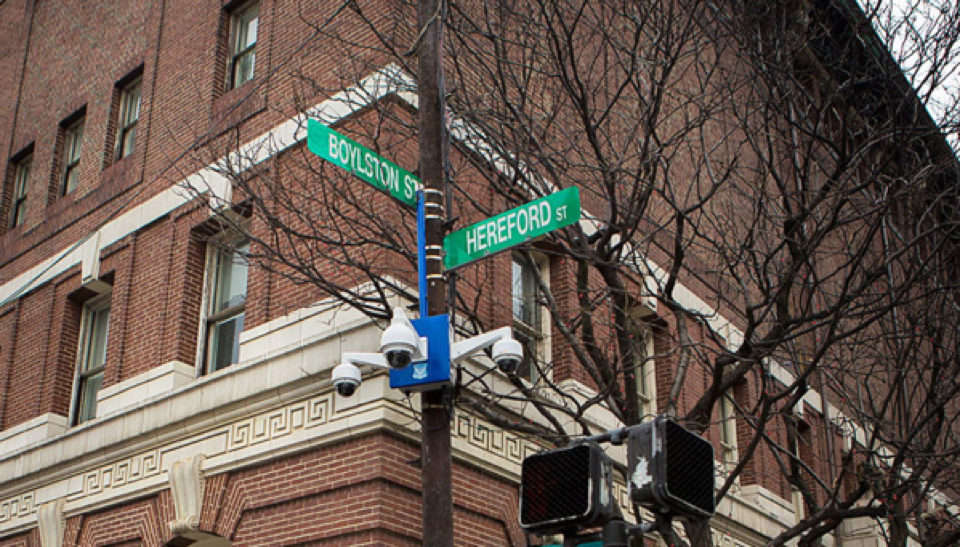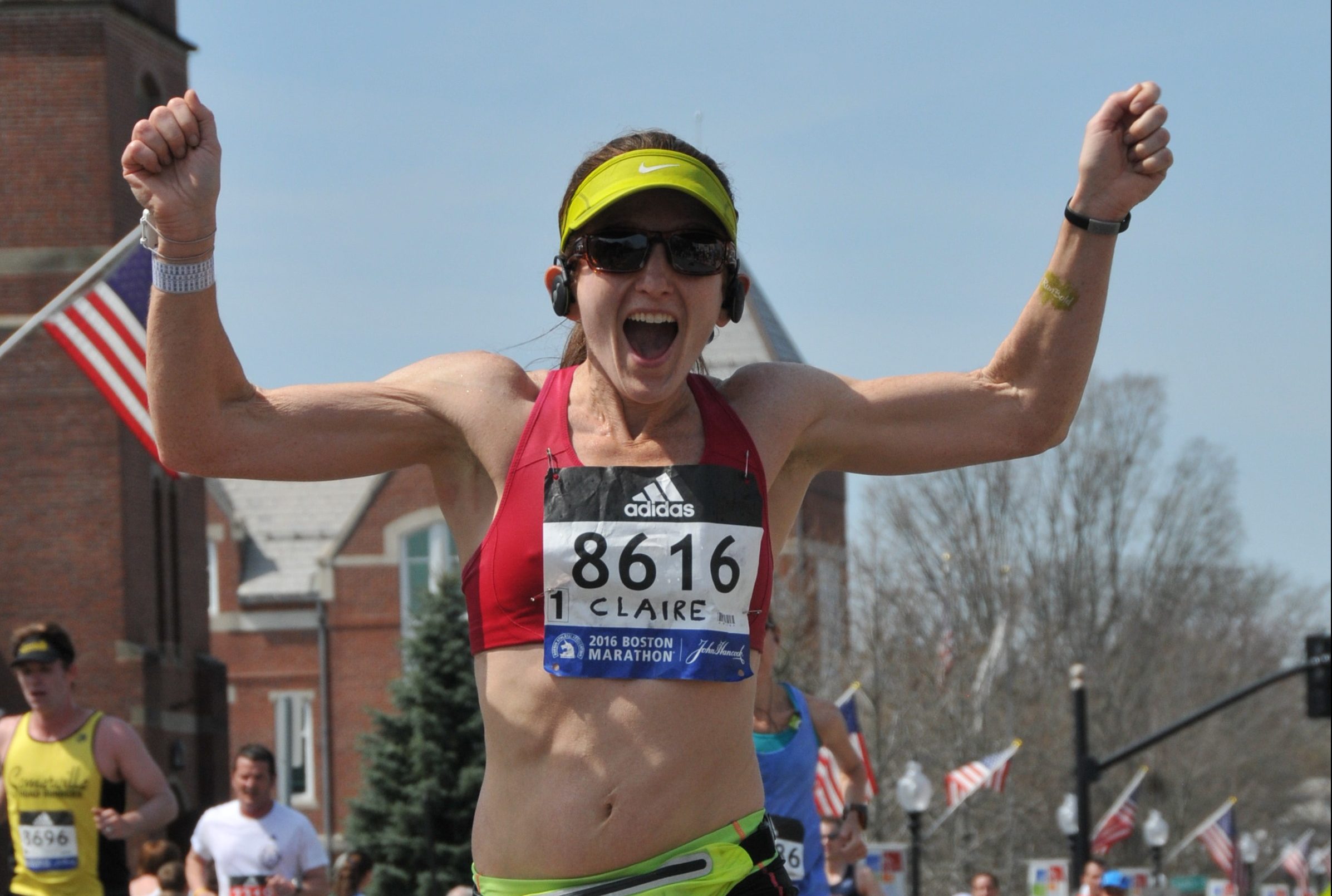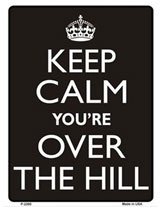The Boston Marathon is an iconic race. But there are a lot of misconceptions about how to train for it. Here are the top 6 myths about the Boston Marathon and what you should know instead.
Myth #1: The best training for Boston is hill repeats.
Hill repeats are awesome for any marathon, no matter what the course. You run up a fairly steep hill at a hard effort for 30-75 seconds and then walk or jog down as your rest and then repeat. The number of sets you do depends on your experience and ability.
Hard, short hill repeats build leg strength, develop neuromuscular connections, and get your heart pounding hard.
Because you are fighting gravity, you cannot run as fast as you would on flat. That means you can work harder at a slower speed which lessens the chance of injury.
But sprinting up a hill over and over again is not specific enough to what you will face on your way to Boston. Hill repeats are great to sprinkle into the beginning of your training cycle (January and February) about once or twice a month, but as you get into the thick of training, you’ll want to get more focused.

Myth #2: Heartbreak Hill is a beast so training on uphills is essential.
Despite its reputation, Heartbreak is not a steep hill. It’s only about a half mile long and a 4.5% gradient. It also is not a continuous incline so you have small breaks of more flat road as you ascend.
So spending a ton of time training on uphills would not be the best use of your training. All hill work will make you stronger, but Heartbreak Hill is takes up less than 2% of the Boston Marathon, so while you shouldn’t ignore uphill training, it shouldn’t be your primary focus.
The first reason why it’s so hard is because it’s at mile 20 which is a rough point in any marathon (and that’s after you’ve been working the rest of the Newton hills for 3 miles).
But the real reason is all the downhill that comes before it. Running downhill is fun and freeing and it’s easy to get carried away because of how effortless it can feel.
But you pay a big price in your quads for all that descent. Running fast downhill creates 54% more impact force on your legs than running on flat and 75% more breaking force. And you likely won’t feel a thing until you have to change gears and go uphill.

Myth #3: Since most of the race is downhill, you need to train mostly on downhill.
Please don’t do that! Yes, you absolutely need to train on downhills. But again, because of those high impact forces, you have to be judicious about it and the risk of injury is higher.
Treat downhill running like any hard workout. You wouldn’t spend all of your training cycle running only marathon pace, would you? (please say no!) You also shouldn’t spend every run, or even most of your runs, going downhill.
Slowly increase your volume and intensity on the downs over time.
I recommend in January to start incorporating rolling hills into your easy runs every week. If you are not used to running hills at all, try once a week. If you run them regularly, you can do most, if not all of your easy runs on gentle hills, being careful to keep the effort easy.
Be sure that your shoes are cushioned enough to take the extra pounding that downhills require.
Take your headphones off and listen to your footfalls on downhills. Do you sound like a ninja or Godzilla? Quiet, light steps are less pounding which will make a big difference in the race.
In February, start adding some downhills to any of your marathon-pace workouts, but avoid any speed on downhills that is faster than about 5-10 seconds marathon pace. You don’t want to spend mile after mile going downhill fast–a little goes a long way.
In March you will have some of your longest runs. On the easy-pace long runs you ideally want to approximate the course as best you can by running a mostly downhill route with flat or a slight hill at the end.
I don’t recommend that you run every single long run on a downhill course because the injury risk is too high and the delayed onset muscle soreness (DOMS) that can result can increase recovery time, which can interrupt your training.
Myth #4: Once you get over Heartbreak, it’s all downhill from there.
This is mostly true in terms of elevation loss, but I find the last 10k of the race to be the most difficult. Let’s face it, the last 10k of any marathon should be hard, but this will feel like nothing else.
If you went too fast in the first half, your quads will feel like they have been shredded like hamburger meat at this point. After they’ve been given a 3-mile uphill break, they will have a very tough time getting back into action.
There are also a couple of sneaky little uphills to contend with as you come into Boston, so don’t forget to save a little mental energy for powering through those to the end.

Myth #5: Once you take the right on Hereford, and a left on Boylston, you’re done!
You know those well-meaning but cruel spectators that cheerfully yell, “you’re almost there!” at mile 19? That’s pretty much the feeling you’ll get when you take the right at Hereford and see that it’s two blocks all uphill. No, it’s not long or steep, but it’s right at the very end, so it will feel very hard.
Once you crest the top, you turn on Bolyston and it is absolutely amazing! The crowds are going nuts and you can finally see the finish line.
But what no one tells you is that the finish line feels like a watery mirage in the desert. It looks like it’s just steps away but it’s nearly a quarter mile, so plan your sprint to the finish well!

Myth #6: Boston is overrated.
I’ve run the Boston Marathon twice and both races were some of the most memorable experiences of my life. Yes, Boston is crowded, expensive, and a logistical challenge, but I promise you, it lives up to the hype. So train smart and have fun!


